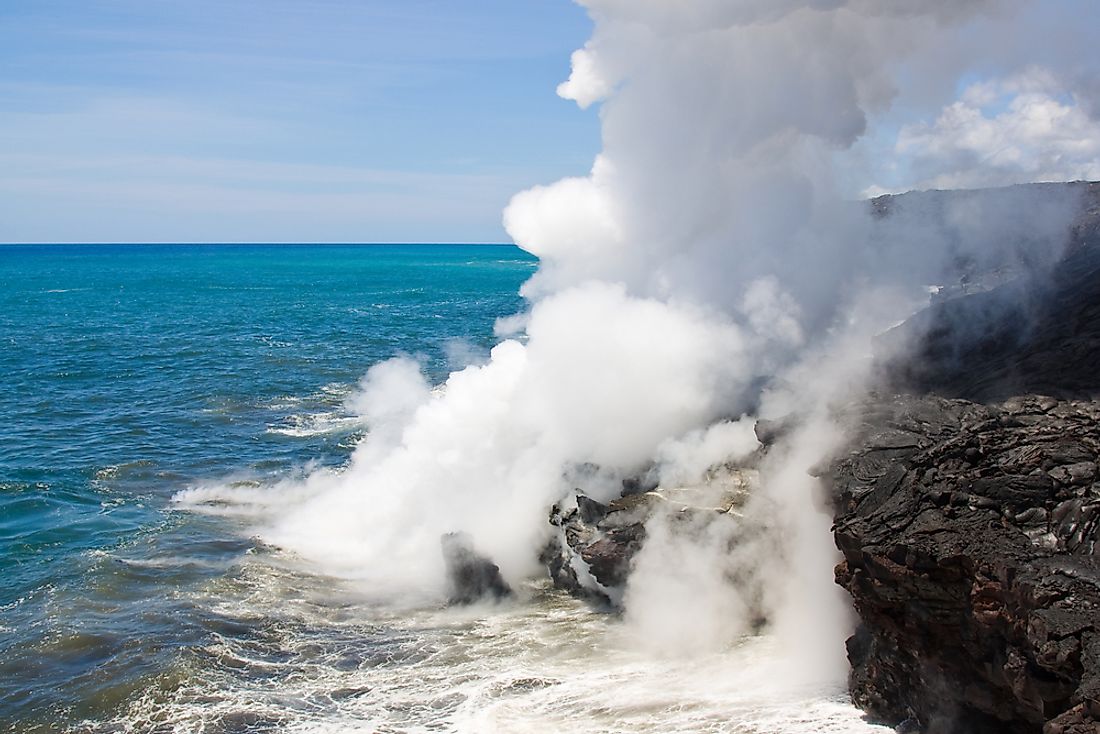What Is Laze?

Laze is a form of acid rain and pollution created by a chemical reaction that occurs when hot molten lava flows into the ocean. The term laze is a combination of the words lava and haze.The lava can be as hot as 2,140 degrees Fahrenheit. Consequently, a mixture of steam, hydrochloric acid, and tiny volcanic glass particles is formed. The combination of volcanic heat and ocean water results in dense white plumes called laze. Laze is hazardous to humans. A recent example of laze was seen during the Kilauea volcanic eruptions that took place in Hawaii on May 2018.
Formation of Laze
Laze is formed when hot molten lava comes into contact with ocean water. Subsequently, the water evaporates, leading to the creation of magnesium salts that mix with the steam. A combination of the two results in hydrogen chloride, which is dangerously corrosive. Laze, such as that formed during the Kilauea eruption, could extend up to a distance of 15 miles. Other parts of the world that experience the formation of laze include Reunion Island (Indian Ocean), the Stromboli volcano (off the coast of Sicily), and Montagu Island (South Atlantic).
Effects of Laze
According to the Centers for Disease Control and Prevention (CDC), breathing laze may damage the lungs. This damage is caused by the dangerously corrosive hydrogen chloride, which is a product of the laze. Hydrogen chloride creates an accumulation of fluid in the lungs, referred to as pulmonary edema, which results in fatigue, chest pain, and coughing. Additionally, laze can cause eye and skin irritation. In severe cases, laze is fatal to both humans and marine life. The heat from the volcanic lava can boil fish in the ocean and leave them floating on the surface of the water. Laze results in boiling water that may deliver third-degree burns. Laze also affects the weather, as it produces acid rain with a pH level between 1.5 and 3.5. Acid rain is corrosive to the skin, clothing, and property.
How to Minimize the Effects of Laze
People that inhabit the coastline when laze is present must immediately vacate the area. Secondly, when laze plumes are blown around by the wind, people should stay indoors and close their doors and windows. Doing so reduces the risk of exposure to the deadly laze plumes. Furthermore, there are protective face masks which can be used, however the masks can only protect one from laze’s glass particles and not the acid gas. Visitors to lava entry areas should avoid standing directly along or under the path of the laze plumes.
In conclusion, laze is lava haze formed during volcanic eruptions. It is a deadly white plume that forms when heated molten lava comes into contact with ocean water.











